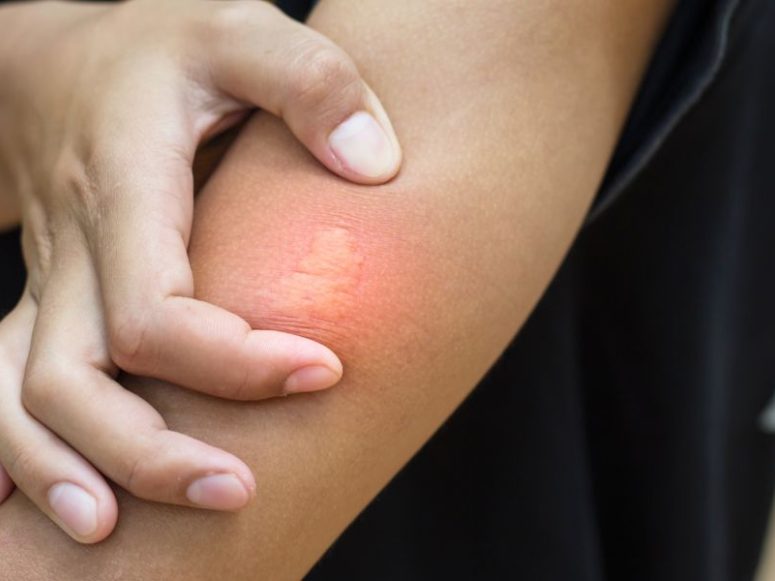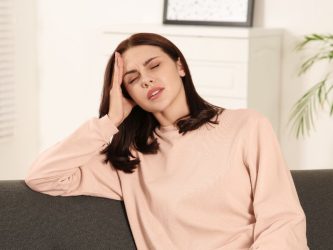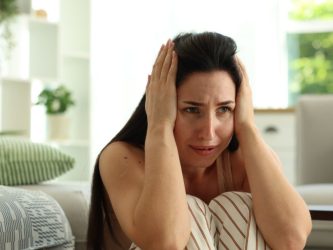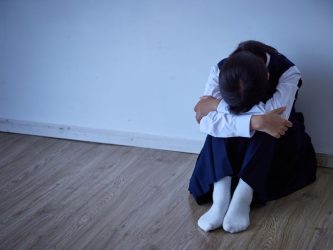Key Takeaways
- For a normal bee sting, the first steps are to move to safety, remove the stinger by scraping it out, and wash the area with soap and water.
- Mild symptoms like pain and swelling can be managed at home with cold compresses, elevation, and over-the-counter medications like ibuprofen and antihistamines.
- A severe allergic reaction (anaphylaxis) is a medical emergency. Watch for symptoms like difficulty breathing, swelling of the face or throat, and dizziness, and call 911 immediately.
Enjoying the beautiful outdoors in Western New York is one of the great joys of summer, but it sometimes comes with the risk of an unpleasant encounter with a bee. A bee sting is a painful and startling experience, and knowing how to treat it properly can make all the difference in your comfort and safety. As your trusted healthcare partner, SOM Medical Practice has created this complete guide to bee sting treatment, so you know exactly what to do.
This article covers immediate first aid, how to manage a mild reaction, and how to recognize the signs of a severe allergic reaction that requires emergency medical care.
1. Immediate First Aid: The First 5 Minutes
What you do in the first few minutes after a bee sting is crucial for minimizing the pain and the amount of venom that enters your body. Follow these steps calmly and quickly.
- Move to a Safe Area: First, get away from the area where you were stung to avoid attracting other bees and getting stung again.
- Remove the Stinger Promptly: Honey bees leave their stinger in the skin, and it continues to pump venom for several seconds. It is essential to remove it as quickly as possible. The Mayo Clinic recommends scraping the stinger out with a fingernail or the edge of a credit card [1]. Avoid using tweezers to pull it out, as squeezing the stinger can inject more venom into your skin.
- Wash the Area: Once the stinger is out, gently wash the site with soap and water to clean the wound and reduce the risk of a secondary infection.
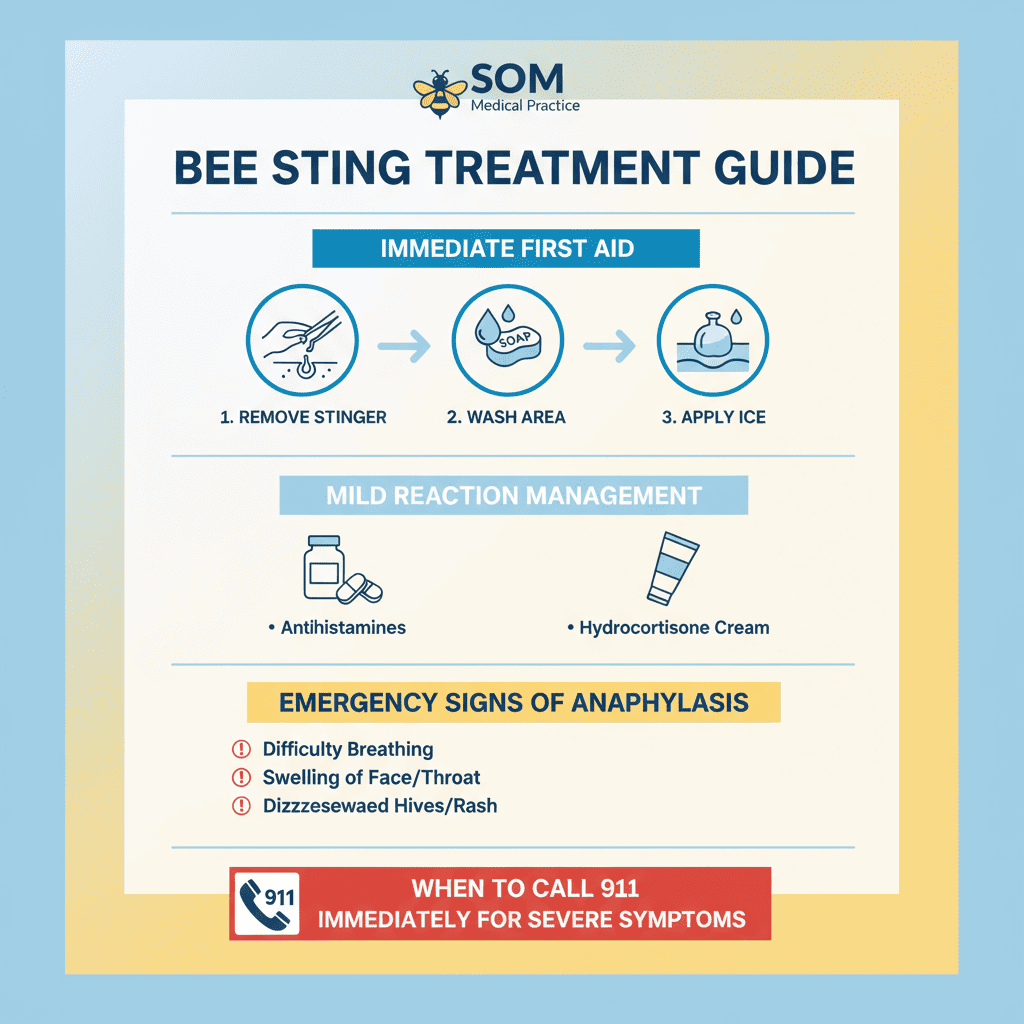
2. Managing a Mild to Moderate Local Reaction
For most people, a bee sting results in a local reaction with symptoms like pain, redness, swelling, and itching around the sting site. These symptoms can be uncomfortable but can usually be managed at home with these simple steps:
- Apply a Cold Compress: To reduce pain and swelling, apply a cloth dampened with cold water or an ice pack to the sting area for 10 to 20 minutes at a time. WebMD suggests doing this once every hour as needed [2].
- Elevate the Area: If you were stung on an arm or leg, elevating the limb can help reduce swelling.
- Use Over-the-Counter Medications:
- For Pain: A pain reliever like ibuprofen (Advil, Motrin) or acetaminophen (Tylenol) can help ease the pain.
- For Itching and Swelling: Applying an over-the-counter hydrocortisone cream or calamine lotion can soothe itching. Taking an oral antihistamine like diphenhydramine (Benadryl) or loratadine (Claritin) can also help reduce itching and swelling [1].
It is normal for the swelling from a bee sting to increase for a day or two before it starts to get better. However, if the swelling is extensive or you are concerned, it is always a good idea to contact your doctor.
3. Recognizing a Severe Allergic Reaction (Anaphylaxis)
For a small percentage of the population (about 3% of adults and 0.5% of children), a bee sting can trigger a severe, life-threatening allergic reaction called anaphylaxis [2]. This is a medical emergency that requires immediate attention. It is critical to know the signs.
Seek emergency medical help immediately if you or someone else experiences any of these symptoms after a bee sting:
| Symptom Category | Signs to Watch For |
| Breathing | Difficulty breathing, wheezing, or swelling of the throat, lips, or tongue. |
| Skin | Hives, flushing, itching, or swelling in areas of the body far from the sting site. |
| Circulation | A weak and rapid pulse, a sharp drop in blood pressure, dizziness, or fainting. |
| Gastrointestinal | Nausea, vomiting, or diarrhea. |
If you suspect anaphylaxis, call 911 right away. Do not wait to see if the symptoms improve.
4. What to Do for a Severe Reaction
If someone is having a severe allergic reaction to a bee sting, every second counts.
- Call 911 Immediately: This is the most important step.
- Use an Epinephrine Auto-Injector: If the person has a prescribed epinephrine auto-injector (like an EpiPen or Auvi-Q), help them use it right away. This medication can reverse the symptoms of anaphylaxis and is life-saving. Even after using an auto-injector, the person must still go to the emergency department, as a second reaction can occur.
- Lay the Person Down: Have them lie flat with their feet elevated. If they are vomiting or having trouble breathing, they can lie on their side.
- Loosen Tight Clothing: This can help them breathe more easily.
5. After the Sting: Prevention and Follow-Up
If you have had a significant local reaction or any systemic allergic reaction to a bee sting, it is important to follow up with your doctor. They may refer you to an allergist for testing to determine the severity of your allergy.
For those with a known severe allergy, an allergist may recommend venom immunotherapy (allergy shots). This treatment involves receiving a series of shots with purified venom over a few years and can significantly reduce or even eliminate the risk of a future anaphylactic reaction [1].
Conclusion
A bee sting can be anything from a minor nuisance to a life-threatening emergency. Knowing the right steps to take can help you handle the situation calmly and effectively. For most stings, simple first aid is all that is needed. However, it is crucial for everyone to be able to recognize the signs of a severe allergic reaction and to act quickly.
If you have concerns about a bee sting, are worried you might have an allergy, or need urgent care for a more severe reaction, the team at SOM Medical Practice is here for you. We offer both primary and urgent care services to help you and your family stay safe and healthy.
References
[1] Mayo Clinic. (2024). Bee sting - Diagnosis and treatment. https://www.mayoclinic.org/diseases-conditions/bee-stings/diagnosis-treatment/drc-20353874
[2] WebMD. (2024). First Aid for Wasp and Bee Stings Treatment. https://www.webmd.com/first-aid/bee-and-wasp-stings-treatment


